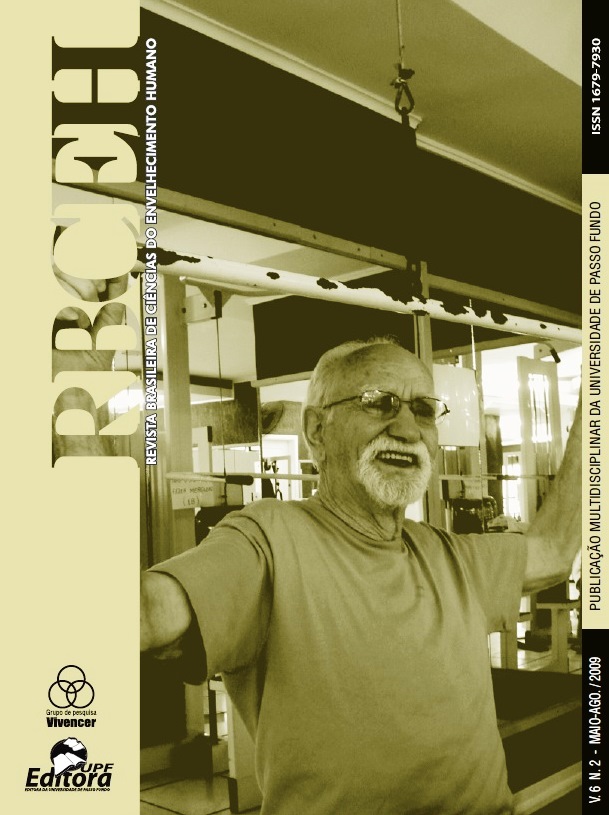EVALUATE THE MUSCULAR FORCE (MUSCULAR TORQUE) OF FLEXORS AND EXTENSORS OF KNEE IN SOCIALLY ACTIVE AGED INDIVIDUALS
DOI:
https://doi.org/10.5335/rbceh.v6i2.405Keywords:
envelhecimento, força muscular, torque muscular, dinamômetro isocinético.Abstract
Introduction: The aging brings obtains many phisiological manifestations, amongst these, the loss of muscular force, as well as the ability of the muscle to exerting force quickly. From the 60 years old this loss becomes more severe and is responsible for limitations in the functionality, deficits of balance and risk of falls. Objective: this research had as objective to evaluate the muscular force (muscular torque) of flexors and extensors of knee in socially active aged individuals. Participants: 100 socialy active aged individuals with age between 60 and 87 years old had participated of the research, of both sorts, that frequented the regional Center of Applied Studies to third age of the University of Passo Fundo, in the city of Passo Fundo, in the period of March to June of 2007, being excluded of the study the individuals that presented cognitive defict and that did not obtain the flexion of knee. Methodology: For the accomplishment of this research the isocinethic dynamometer Biodex Multi Joint 3 was used, in the speeds of 120°, 180° and 240°, in the movements of flexion and extension. Initially the participants had carried through a heating of 5 minutes in ergometric bicycle, and after they had been submitted to a series of three repetitions of movements, being considered the average of the three repetitions. The evaluations had happened at the Laboratory of Biomechanics in the College of Physical Education and Physioterapy at the University of Passo Fundo – UPF – Result Step: In our study it was possible to observe that in the comparison between the lower limbs right and left, the muscular unbalance had only exceeded 10% in the sample with more than 80 years, in the masculine sex, what we cannot only consider significant due to this sample to be composed for two individuals in each sort. In the average of the peak of torque for the individuals of the masculine sex 240° with p<0,03 is possible to verify the significance of the flexion movement, 0,03 when analyzed all the sample, and for the individuals of 60-69 years in the extension movement 120° with p<0,04. One comparing the different sorts is verified that the individuals of the masculine sex, they are the raised peaks of torque more elevated. Conclusion: The muscular force (muscular torque) is bigger in the individuals of the masculine sex; the extensors muscles of the knee (quadriceps) are strongest. The flexors muscles not present relacion velocity peak of tork. The presence of osteoarticular illness, mainly in the woman, can be influenced in the lesser peak of torque of individuals. Keywords: aging, muscular force, muscular torque, isocinethic dynamometerDownloads
Download data is not yet available.
Downloads
Published
2010-10-23
Issue
Section
Artigos Originais
License

Todos os artigos estão licenciados com a licença Creative Commons Atribuição-NãoComercial-SemDerivações 4.0 Internacional. A Revista é detentora do Copyright.
How to Cite
EVALUATE THE MUSCULAR FORCE (MUSCULAR TORQUE) OF FLEXORS AND EXTENSORS OF KNEE IN SOCIALLY ACTIVE AGED INDIVIDUALS. (2010). Revista Brasileira De Ciências Do Envelhecimento Humano, 6(2). https://doi.org/10.5335/rbceh.v6i2.405




